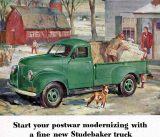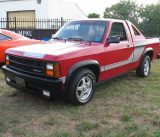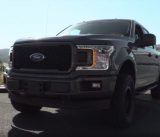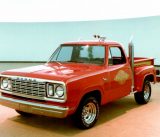It’s ugly, like a box truck. It’s oddly classic, sporting the nostalgic Willys front grille and round lights. It’s utilitarian, optioned with a farm truck-like wood framed bed. It’s strangely… “cute”, sporting a front fascia that looks like a strange, smiley caterpillar face. It’s call the Jeep Forward Control, or simply, the FC-150.

source: flickr
This strange amalgamation of Jeep and work truck is the brain child of production between Willys and Kaiser Jeep. Build between 1956 and 1965, the Jeep FC-150 sought to bridge a critical gap between the popularity of the original Willys 4×4 and the quickly-growing civilian truck market.
Post-WWII, civilian demand for reliable trucks grew immensely. Where the Dodges and Chevys of the 40’s and 50’s provided supply for market demand, ironically, Jeep failed to meet the competition – until the Forward Control was introduced. The Willys of the Great War was often touted as the most reliable truck ever produced during wartime. The Hurricane F4 and Super Hurricane motors found in the Jeep provided legendary reliability. Yet, the powertrain hadn’t been mated with an accommodating civilian truck frame and body.
The FC-150 did just that. Designer Brooks Steven took styling inspiration from full-size, cab-over-engine trucks. The result was what many consider to be the earliest minivan-type vehicle. Officially introduced in 1956, the FC-150 was largely developed upon the CJ-5 chassis.

Equipped with a relatively slim and stout, 57” x 81” wheelbase and 78” bed, the ratio of cabin to bed illustrated the FC-150’s design intent as a compact hauler. A newly developed T-98, 4-speed manual transmission offered a moderate power band across the curve, allowing the 5,000-lb. vehicle to haul a respectable amount of weight.
Though awkward in appearance, the FC-150 received critical acclaim upon its release. The vehicle’s incredibly small wheelbase allowed the compact truck to haul big loads through tight spaces – a need the U.S. military sought to satisfy. The FC-150 became so popular that the military adopted the vehicle, rebranding it under the designations M676, M677, M678, and M679. While the M676 was essentially the civilian FC-150, the latter three productions were tailor-made for military applications. The M677 featured a four-door crew cab with canopy over the bed, providing personnel transport. The M678 was reconverted from its open bed and frame to a full van body, providing transport for officers and small parties. The M679 provided additional modification atop the M678 chassis to function as an ambulance.

An uncovered M677
Although highly praised for its performance and capacity compared to its size, the FC-150 never received the big sales Jeep hoped it would garner. After production of just 30,000 units across nine years, the Forward Control line was shuttered in 1965. Although long discontinued, the FC lives on in many forms across the globe: Higher models like the FC-160, FC-170 and full-bodied FC-180 can often be found Mumbai and Asian markets, functioning as transport vehicles and taxies. The same applies in Spain, where a similarly designed SV line of Forward Control vans provides similar function.
Today, the FC-150 can be filed under the “bizarre” of the Jeep world. Though niche, it is a sought-after collectible, thanks to its unique image and functionality, and low production numbers.





